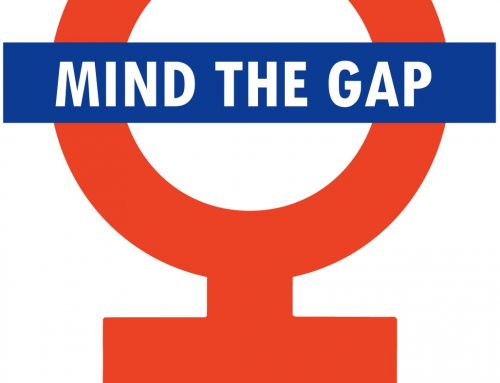 Recently on the blog, we talked about the Paycheck Fairness Act, legislation that would have allowed gender-based wage disparities to be challenged and employers held accountable. On April 8, 2014, the act went up for a vote that would allow debate on the Senate floor, but didn’t pass. Senators voted along party lines: Democrats, yes, Republicans, no. This was the third time that the bill has come up in Congress and was tamped down. With women paid at about 77 cents for every dollar a man makes, it seems surprising that this legislation wouldn’t pass. What’s next for leveling the gender gap?
Recently on the blog, we talked about the Paycheck Fairness Act, legislation that would have allowed gender-based wage disparities to be challenged and employers held accountable. On April 8, 2014, the act went up for a vote that would allow debate on the Senate floor, but didn’t pass. Senators voted along party lines: Democrats, yes, Republicans, no. This was the third time that the bill has come up in Congress and was tamped down. With women paid at about 77 cents for every dollar a man makes, it seems surprising that this legislation wouldn’t pass. What’s next for leveling the gender gap?
Republicans felt that anti-discrimination laws already in place should address these disparities, and that if the legislation became law, the door would open wide for lawsuits. Some stated that women simply take lower paying jobs, or leave the workforce periodically to tend to family. Rep. Lynn Jenkins (R-Kansas) had the following to say at a press conference in April: “Many ladies I know feel like they are being used as pawns, and find it condescending [that] Democrats are trying to use this issue as a political distraction from the failures of their economic policy.” Jenkins went on to say: “When it comes to employment, the fact is many women seek jobs that provide more flexibility for their family over more money, which is the choice that I made as a young working mom.”
Senate Minority Leader Mitch McConnell (R-Ky.) said: “At a time when the Obama economy is already hurting women so much, this legislation would double down on job loss, all while lining the pockets of trial lawyers.”
It is clear that yet again, both sides of the aisle are polarized over an issue that may seem common sense to the average voter. So while Washington spars for the hearts and minds of female voters, what can be done next for equal pay? If a hoped-for bill that might open some doors is stalled, what else can be done?
At the same time the Paycheck Fairness Act was voted on in the Senate, President Obama signed two documents into law that may help the progress toward equal pay. The first was an Executive Order prohibiting federal contractors from retaliating against workers who discuss their salaries with one another. The second, a Presidential Memorandum, ordered new rules for government contractors to file data with the federal government showing how they compensate employees, including by sex and race.
Claudia Goldin, a Harvard labor economist, is responsible for the statistic of women earning $0.77 for every man’s dollar. In the course of her studies, she has determined a solution for this problem outside of government intervention: flexibility. In this article, she is quoted: ” ‘The gender gap in pay would be considerably reduced and might even vanish if firms did not have an incentive to disproportionately reward individuals who worked long hours and who worked particular hours,’ Goldin writes. If firms could offer workers more options for how much to work and when to work, she thinks, the wage gap between men and women who work the same hours would nearly disappear.” She also stressed that equalizing pay may also benefit from paid family leave (and that would include fathers) and affordable child care that might reduce the pressure on take home salary.
Another movement not often discussed occurred during the 1970s and 1980s: “The idea was simple, but significant: Instead of focusing on equal pay for equal work as we commonly think about it now, governments required employers to pay a man and a woman the same for doing similar work but in different jobs, based on the level of required skill, effort, responsibility, and working conditions. For example, women’s sports coaches tend to be paid less than men’s sports because they bring in less money. But if they do the same kinds of work, pay equity or comparable pay would require they be compensated the same.” In five states, the wage gap was reduced by 25-33%. Minnesota, which is one of the few states that still implements this program, has found that going back and reviewing compensation every couple of years was key to maintaining equality. Unfortunately, Minnesota appears to be the only success story; many states do not have the rigorous review requirements, and the rest fell away. Other efforts have gotten stalled in state government. But it is worth a closer examination. We haven’t managed to close the wage gap any further in the last 10 years, and if laws cannot be passed allowing women the power to challenge gaps that exist in their jobs, it is time to think more creatively.
It appears Barbara Mikulski, (D-MD), one of the co-sponsors of the Paycheck Fairness Act, isn’t giving up yet. Just after the legislation was voted down, she said: “While we lost today’s vote to move the Paycheck Fairness Act forward, we refuse to lose the battle. We are going to finish the fight to get equal pay for equal work. We’re going to continue to fight to lift the veil of secrecy where right now in many workplaces you are forbidden to discuss the salary that you and your coworkers make. Because if you don’t know, you can’t fight for more dough! I call on the women of America to suit up, square your shoulders, put on your lipstick and continue the fight for this equal pay revolution!”





